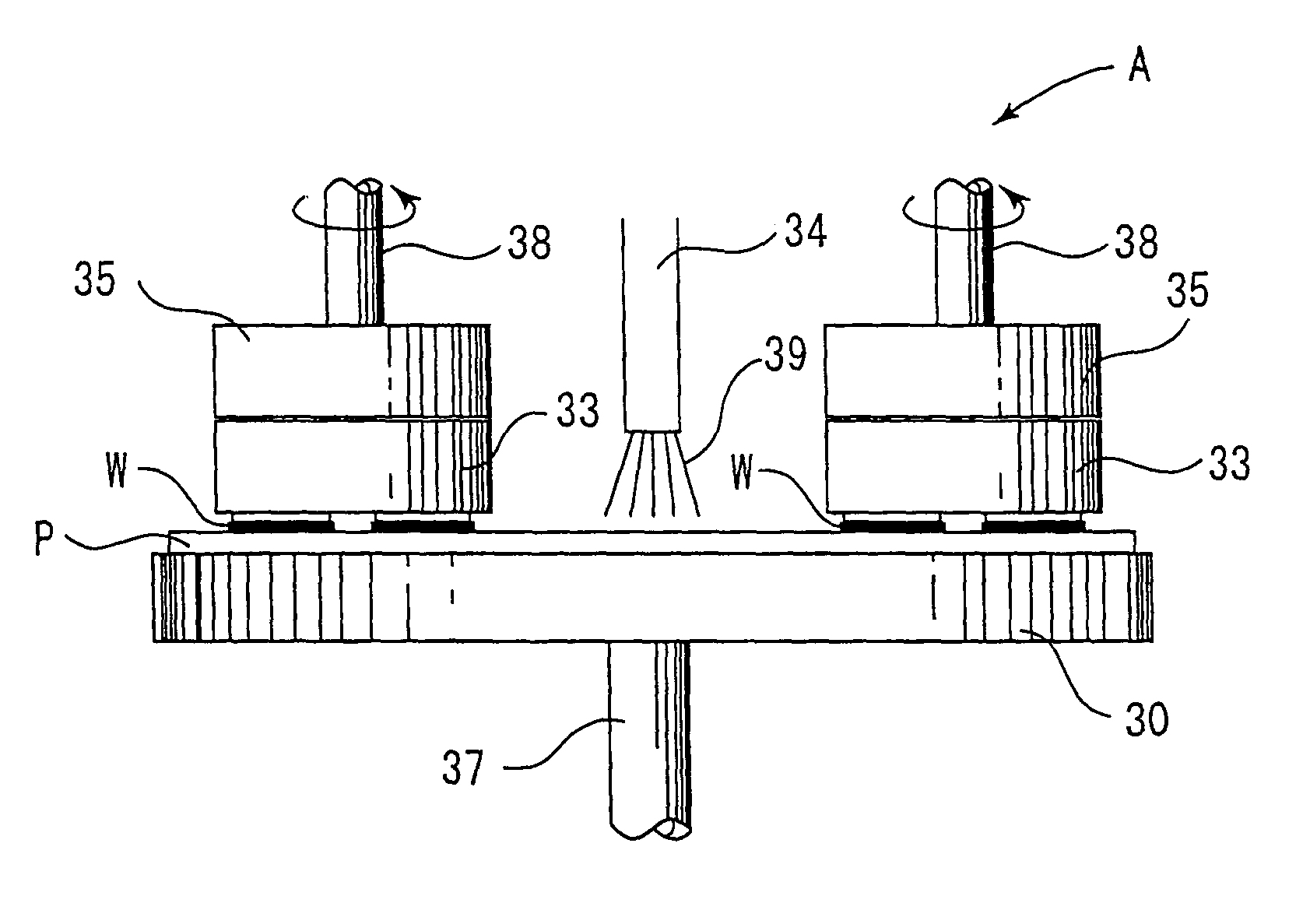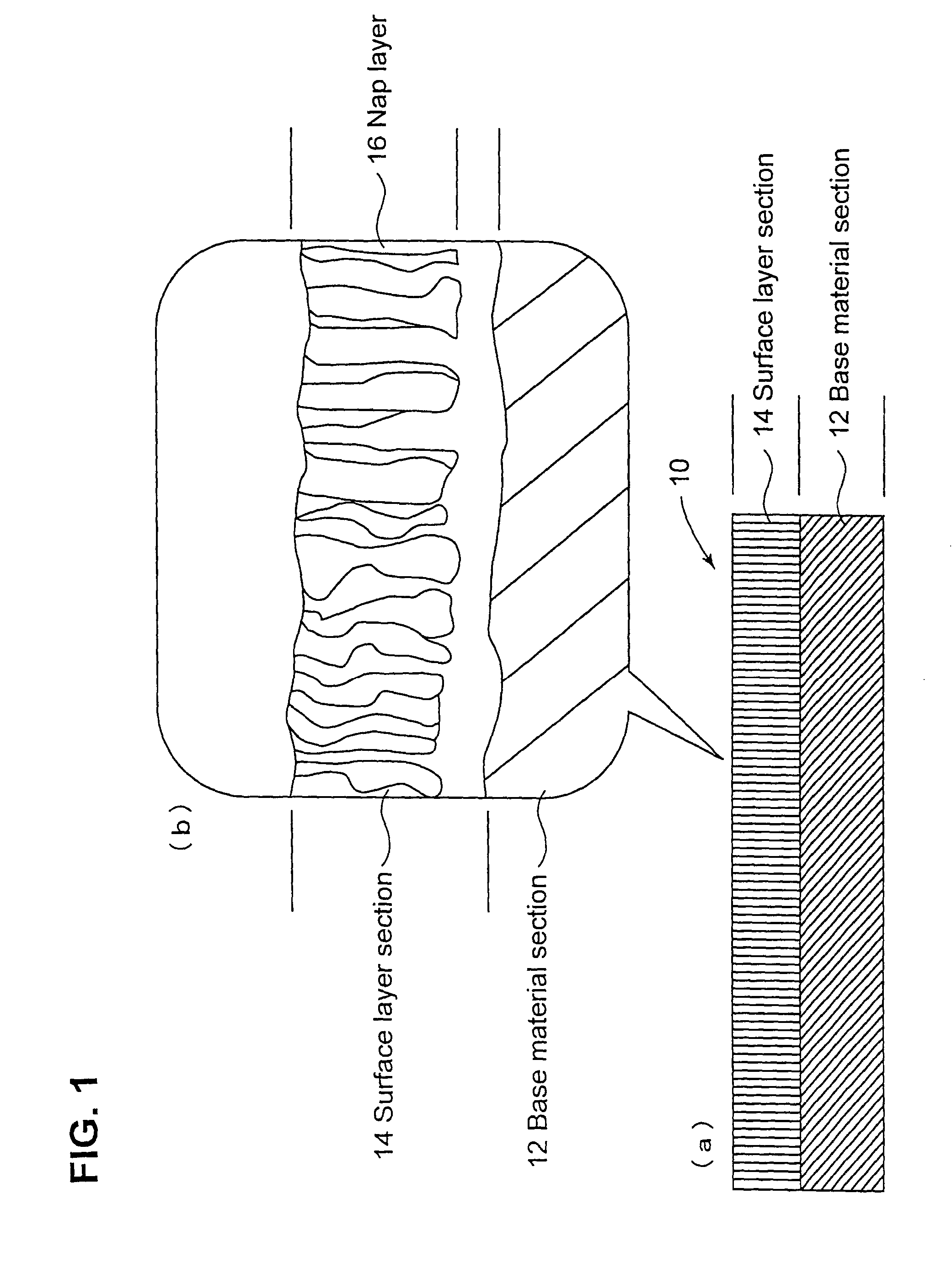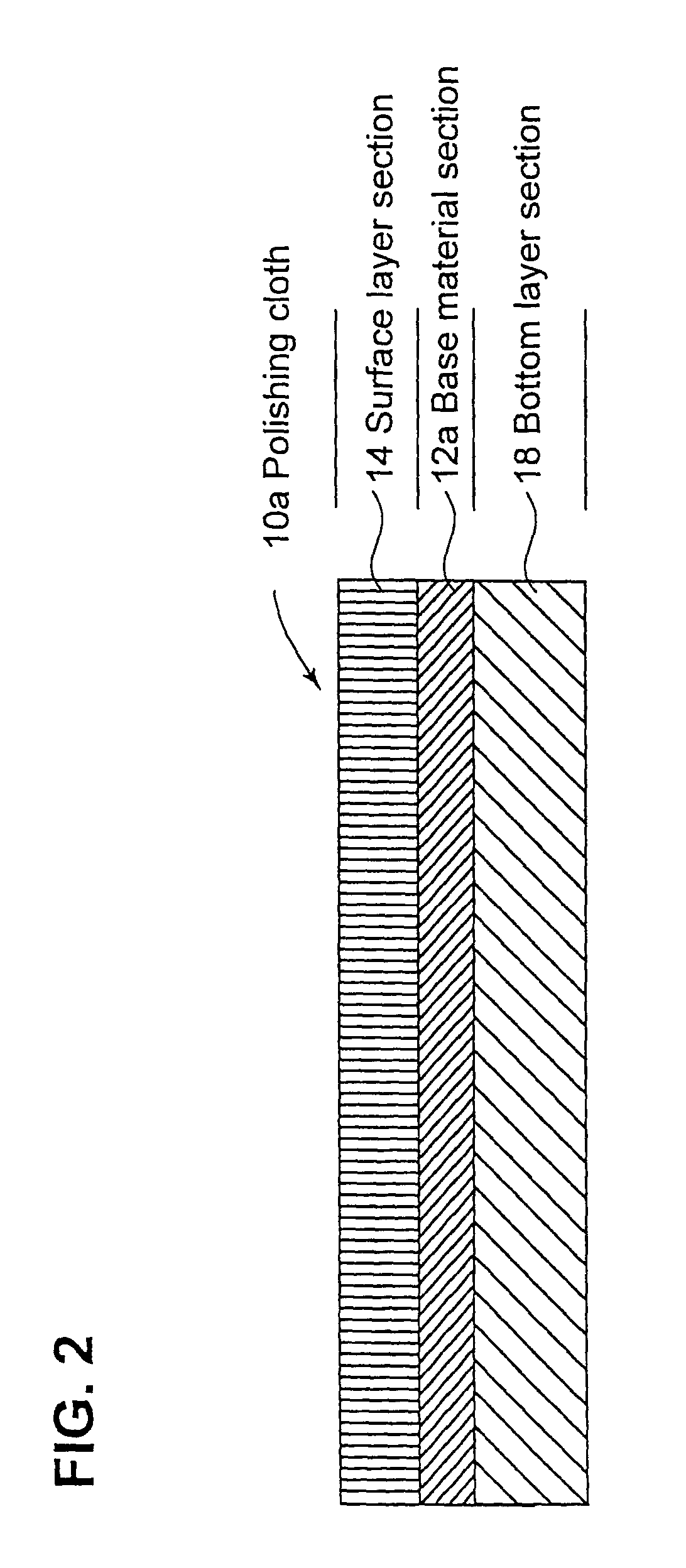Method of polishing semiconductor wafer
- Summary
- Abstract
- Description
- Claims
- Application Information
AI Technical Summary
Benefits of technology
Problems solved by technology
Method used
Image
Examples
examples 1 and 2
[0045]Using polishing cloths each with a structure similar to those of Comparative Examples 1 and 2, in which surface layer sections FS-3 of the suede type final polishing cloths were replaced by FS-7 (a trade name, made by Daiichi Lace K.K.) having a nap layer of 520 μm (Example 1) and FS-7 having a nap layer of 70 μm (Example 2), respectively, to form three layer structures of FS-7 / #188PET / HN-400, polishing was performed in the same conditions and with the same polishing agent as in Comparative Examples 1 and 2.
[0046]In Examples 1 and 2, polishing micro-scratches and blind scratches were hardly generated. Typical polishing results of a wafer (W) (results of Example 1) are shown in FIG. 6 (polishing micro-scratches) and FIG. 7 (blind scratches). Note that the count number of polishing micro-scratches (0.10 μm to 0.09 μm in particle diameter) in FIG. 6 was 74.
[0047]The results of Comparative Examples 1 and 2 (FS-3 / #188PET / HN-400) and the results of Examples 1 and 2 (FS-7 / #188PET / HN-...
examples 3 and 4
[0050]Using polishing cloths each of a structure similar to those of Comparative Examples 3 and 4 (the two layer polishing cloth of FIG. 1), in which nap layers were changed to one of 530 μm (Example 3) and another of 550 μm (Example 4), respectively, wafers were polished in a manner similar to Comparative Examples 3 and 4.
[0051]As a result, micro-scratches (polishing slight scratches) and blind scratches on a wafer surface were hardly observed when both the above polishing cloths were used.
example 5
[0052]A batch polishing apparatus similar to the apparatus used in Comparative Examples 3 and 4 was used and a polishing cloth of a three layer structure was adopted as a final polishing cloth.
[0053]As the three layer polishing cloth, FS-7 / #188PET / HN-400 having a nap layer of 570 μm (similar to Example 2) was used.
[0054]As a result, micro-scratches and blind scratches on a wafer surface were not observed. Further, flatness in a peripheral portion of each wafer was better than when the two layer polishing cloth was used.
[0055]As described above, it has been found that there can be prevented generation of polishing micro-scratches (slight scratches) and blind scratches on a wafer surface depending on a length of a nap layer, regardless of types of polishing apparatus (a batch type or a single wafer type), and independently of types of polishing cloths such as a two layer one or a three layer one. Especially, it is effective to use a final polishing cloth with a nap length of 500 μm or...
PUM
| Property | Measurement | Unit |
|---|---|---|
| Thickness | aaaaa | aaaaa |
| Thickness | aaaaa | aaaaa |
Abstract
Description
Claims
Application Information
 Login to View More
Login to View More - R&D
- Intellectual Property
- Life Sciences
- Materials
- Tech Scout
- Unparalleled Data Quality
- Higher Quality Content
- 60% Fewer Hallucinations
Browse by: Latest US Patents, China's latest patents, Technical Efficacy Thesaurus, Application Domain, Technology Topic, Popular Technical Reports.
© 2025 PatSnap. All rights reserved.Legal|Privacy policy|Modern Slavery Act Transparency Statement|Sitemap|About US| Contact US: help@patsnap.com



